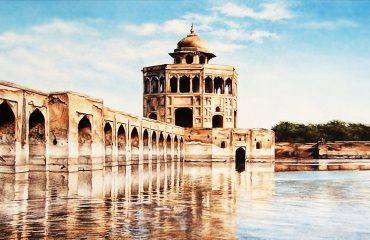Heat is the number one weather-related killer. Heat kills by pushing the human body beyond its limits. In extreme heat and high humidity, evaporation is slowed and the body must work extra hard to maintain a normal temperature. Extremely hot weather can be an annoyance, but in some instances it can also be dangerous.
Most heat disorders occur because the victim has been overexposed to heat or has over-exercised for his or her age and physical condition. Older adults, young children and those who are sick or overweight are more likely to succumb to extreme heat.
What is Heat Stroke?
Heat stroke is the most serious heat-related illness. It occurs when the body becomes unable to control its temperature: the body’s temperature rises rapidly, the sweating mechanism fails, and the body is unable to cool down. Body temperature may rise to 106°F or higher within 10 to 15 minutes. Heat stroke can cause death or permanent disability if emergency treatment is not provided.
Symptoms of a Heat Stroke
- Very High Blood pressure
- Red, hot and dry skin (Without sweat)
- A dry and swollen tongue
- Rapid pulse
- A throbbing headache
- Dizziness, confusion, and nausea
- Eventual unconsciousness

Ways to Prevent Heat Stroke
- Make sure you dress yourself and your kids in “minimal, loose-fitting and lightweight clothing”
- Drink plenty of fluids. To prevent dehydration, drink plenty of water, fruit juice, or vegetable juice per day.
- Use Sunscreens before going out
- Take regular showers more than once a day
- Keep the environment as cool as possible – keep curtains drawn and minimal light
- Be extra careful while administering any medicines since they may have certain harmful side effects (including causing dehydration)
- Avoid caffeine and alcohol as these will promote dehydration
- Never stay in a parked car or any confined space without proper ventilation
- Instead of hot foods, try lighter summer fare including frequent small meals or snacks containing cold fruit or low fat dairy products
- Avoid using any heat radiating devices such as hair straighteners and hair dryers
- Limit your physical exhaustion by limiting physical activity
- Try to stay away from kitchens and laundry rooms
- Take extra precautions during the hottest parts of the day (11 am to 3 pm). If it is not possible to cease activity, increase fluid intake and take frequent rests in the shade.
- avoid being sunburned as this affects the way in which the body cools down. Wear a wide-brimmed hat and use sunscreen.
- Use Umbrella when you go out to save your self from sun light

However, if someone is already suffering from a heat stroke, make sure you follow the following steps while waiting for an ambulance.
Emergency Steps for Heat Stroke Patients
- Wet their skin with water or wrap it in wet a cloth after removing as much clothing from their body as possible or give them an ice bath
- Fan continuously
- Do not give the person fluids to drink
- Position an unconscious person on their side and clear their airway
- Apply ice packs to the patient’s armpits, groin, neck and back (These areas are rich with blood vessels and close to the skin so cooling them may reduce body temperature)
- Monitor their body temperature and continue cooling efforts until the body temperature drops below 38C.

All of us at Locally Lahore would like to remind you to stay safe this summer by using this article to avoid heat strokes and heat waves.





You must be logged in to post a comment.